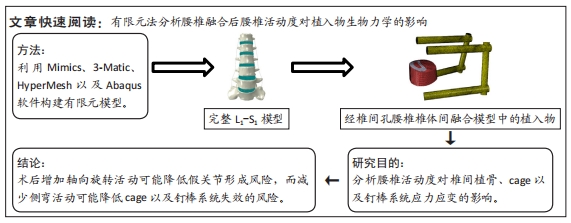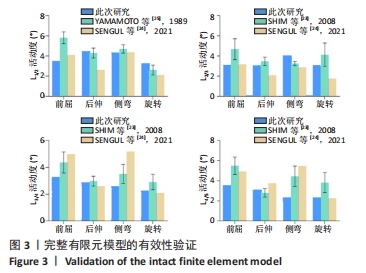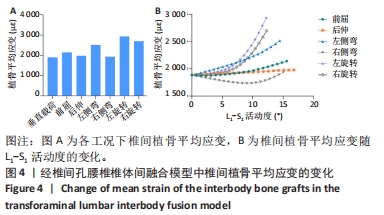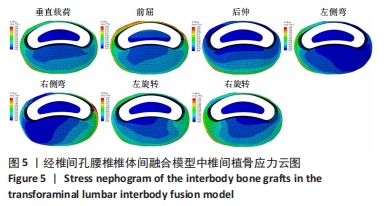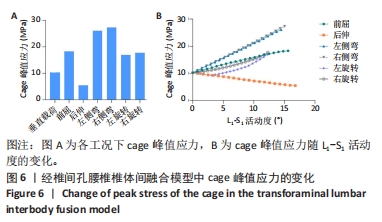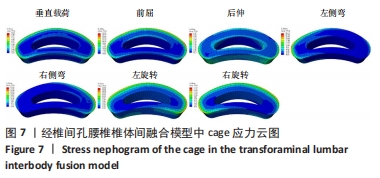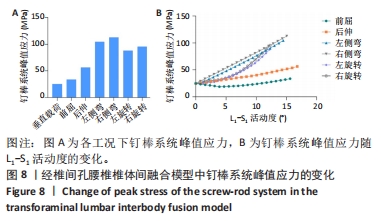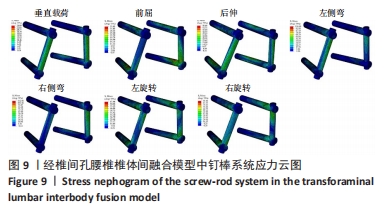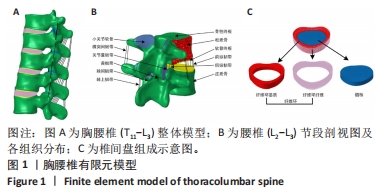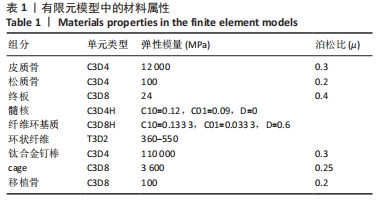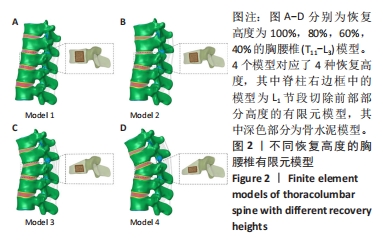[1] MACKI M, HAMILTON T, HADDAD YW, et al. Expandable Cage Technology-Transforaminal, Anterior, and Lateral Lumbar Interbody Fusion. Oper Neurosurg (Hagerstown). 2021;21(Suppl 1):S69-S80.
[2] MUTHIAH N, YOLCU YU, ALAN N, et al. Evolution of polyetheretherketone (PEEK) and titanium interbody devices for spinal procedures: a comprehensive review of the literature. Eur Spine J. 2022;31(10):2547-2556.
[3] LITAK J, SZYMONIUK M, CZYŻEWSKI W, et al. Metallic Implants Used in Lumbar Interbody Fusion. Materials (Basel). 2022;15(10):3650.
[4] NUNLEY PD, EASTLACK RK, MILLER LE, et al. Metal-Free Cortico-Pedicular Device for Supplemental Fixation in Lumbar Interbody Fusion. World Neurosurg. 2023;174:4-10.
[5] DINIZO M, SRISANGUAN K, DOLGALEV I, et al. Pseudarthrosis and Rod Fracture Rates After Transforaminal Lumbar Interbody Fusion at the Caudal Levels of Long Constructs for Adult Spinal Deformity Surgery. World Neurosurg. 2021;155:e605-e611.
[6] JAEGER A, GIBER D, BASTARD C, et al. Risk factors of instrumentation failure and pseudarthrosis after stand-alone L5-S1 anterior lumbar interbody fusion: a retrospective cohort study. J Neurosurg Spine. 2019;31(3):338-346.
[7] WONG CE, HU HT, KAO LH, et al. Biomechanical feasibility of semi-rigid stabilization and semi-rigid lumbar interbody fusion: a finite element study. BMC Musculoskelet Disord. 2022;23(1):10.
[8] LESZCZYNSKI A, MEYER F, CHARLES YP, et al. Development of a flexible instrumented lumbar spine finite element model and comparison with in-vitro experiments. Comput Methods Biomech Biomed Engin. 2022;25(2):221-237.
[9] LAUBACH M, KOBBE P, HUTMACHER DW. Biodegradable interbody cages for lumbar spine fusion: Current concepts and future directions. Biomaterials. 2022;288:121699.
[10] VON ARX M, LIECHTI M, CONNOLLY L, et al. From Stoop to Squat: A Comprehensive Analysis of Lumbar Loading Among Different Lifting Styles. Front Bioeng Biotechnol. 2021;9:769117.
[11] PARK WM, KIM YJ, WANG SB, et al. Investigation of lumbar spine biomechanics using global convergence optimization and constant loading path methods. Math Biosci Eng. 2020;17(4):2970-2983.
[12] ZHU J, SHEN H, CUI Y, et al. Biomechanical Evaluation of Transforaminal Lumbar Interbody Fusion with Coflex-F and Pedicle Screw Fixation: Finite Element Analysis of Static and Vibration Conditions. Orthop Surg. 2022;14(9):2339-2349.
[13] SUN Z, SUN Y, LU T, et al. A swelling-based biphasic analysis on the quasi-static biomechanical behaviors of healthy and degenerative intervertebral discs. Comput Methods Programs Biomed. 2023;235: 107513.
[14] WICZENBACH T, PACHOCKI L, DASZKIEWICZ K, et al. Development and validation of lumbar spine finite element model. Peer J. 2023;11: e15805.
[15] LU T, LU Y. Interlaminar stabilization offers greater biomechanical advantage compared to interspinous stabilization after lumbar decompression: a finite element analysis. J Orthop Surg Res. 2020; 15(1):291.
[16] LU T, LU Y. Comparison of Biomechanical Performance Among Posterolateral Fusion and Transforaminal, Extreme, and Oblique Lumbar Interbody Fusion: A Finite Element Analysis. World Neurosurg. 2019;129:e890-e899.
[17] WANG B, HUA W, KE W, et al. Biomechanical Evaluation of Transforaminal Lumbar Interbody Fusion and Oblique Lumbar Interbody Fusion on the Adjacent Segment: A Finite Element Analysis. World Neurosurg. 2019;126:e819-e824.
[18] LU T, REN J, SUN Z, et al. Relationship between the elastic modulus of the cage material and the biomechanical properties of transforaminal lumbar interbody fusion: A logarithmic regression analysis based on parametric finite element simulations. Comput Methods Programs Biomed. 2022;214:106570.
[19] FAN W, GUO LX. A comparison of the influence of three different lumbar interbody fusion approaches on stress in the pedicle screw fixation system: Finite element static and vibration analyses. Int J Numer Method Biomed Eng. 2019;35(3):e3162.
[20] PERNA F, BORGHI R, PILLA F, et al. Pedicle screw insertion techniques: an update and review of the literature. Musculoskelet Surg. 2016; 100(3):165-169.
[21] KIAPOUR A, MASSAAD E, JOUKAR A, et al. Biomechanical analysis of stand-alone lumbar interbody cages versus 360° constructs: an in vitro and finite element investigation. J Neurosurg Spine. 2022;36(6):928-936.
[22] LIANG W, HAN B, HAI Y, et al. Biomechanical Analysis of the Reasonable Cervical Range of Motion to Prevent Non-Fusion Segmental Degeneration After Single-Level ACDF. Front Bioeng Biotechnol. 2022; 10:918032.
[23] SHIM CS, PARK SW, LEE SH, et al. Biomechanical evaluation of an interspinous stabilizing device, Locker. Spine (Phila Pa 1976). 2008; 33(22):E820-E827.
[24] SENGUL E, OZMEN R, YAMAN ME, et al. Influence of posterior pedicle screw fixation at L4-L5 level on biomechanics of the lumbar spine with and without fusion: a finite element method. Biomed Eng Online. 2021;20(1):98.
[25] YAMAMOTO I, PANJABI MM, CRISCO T, et al. Three-dimensional movements of the whole lumbar spine and lumbosacral joint. Spine (Phila Pa 1976). 1989;14(11):1256-1260.
[26] DERMAN PB, SINGH K. Surgical Strategies for the Treatment of Lumbar Pseudarthrosis in Degenerative Spine Surgery: A Literature Review and Case Study. HSS J. 2020;16(2):183-187.
[27] CHUN DS, BAKER KC, HSU WK. Lumbar pseudarthrosis: a review of current diagnosis and treatment. Neurosurg Focus. 2015;39(4):E10.
[28] TURNER CH. Homeostatic control of bone structure: an application of feedback theory. Bone. 1991;12(3):203-217.
[29] 张舒,吴兴裕,李莹辉.骨骼的功能适应性与应力应变反应[J].航天医学与医学工程,2001(5):368-372.
[30] DONG E, SHI L, KANG J, et al. Biomechanical characterization of vertebral body replacement in situ: Effects of different fixation strategies. Comput Methods Programs Biomed. 2020;197:105741.
[31] ZUCKERMAN SL, DEVIN CJ. Pseudarthrosis of the Cervical Spine. Clin Spine Surg. 2022;35(3):97-106.
[32] LEBHAR J, KRIEGEL P, CHATELLIER P, et al. Tantalum implants for posterior lumbar interbody fusion: A safe method at medium-term follow-up? Orthop Traumatol Surg Res. 2020;106(2):269-274.
[33] KAPOEN C, LIU Y, BLOEMERS FW, et al. Pedicle screw fixation of thoracolumbar fractures: conventional short segment versus short segment with intermediate screws at the fracture level-a systematic review and meta-analysis. Eur Spine J. 2020;29(10):2491-2504.
[34] AHN YH, CHEN WM, LEE KY, et al. Comparison of the load-sharing characteristics between pedicle-based dynamic and rigid rod devices. Biomed Mater. 2008;3(4):044101.
[35] MAVROGENIS AF, VOTTIS C, TRIANTAFYLLOPOULOS G, et al. PEEK rod systems for the spine. Eur J Orthop Surg Traumatol. 2014;24 Suppl 1: S111-S116. |
